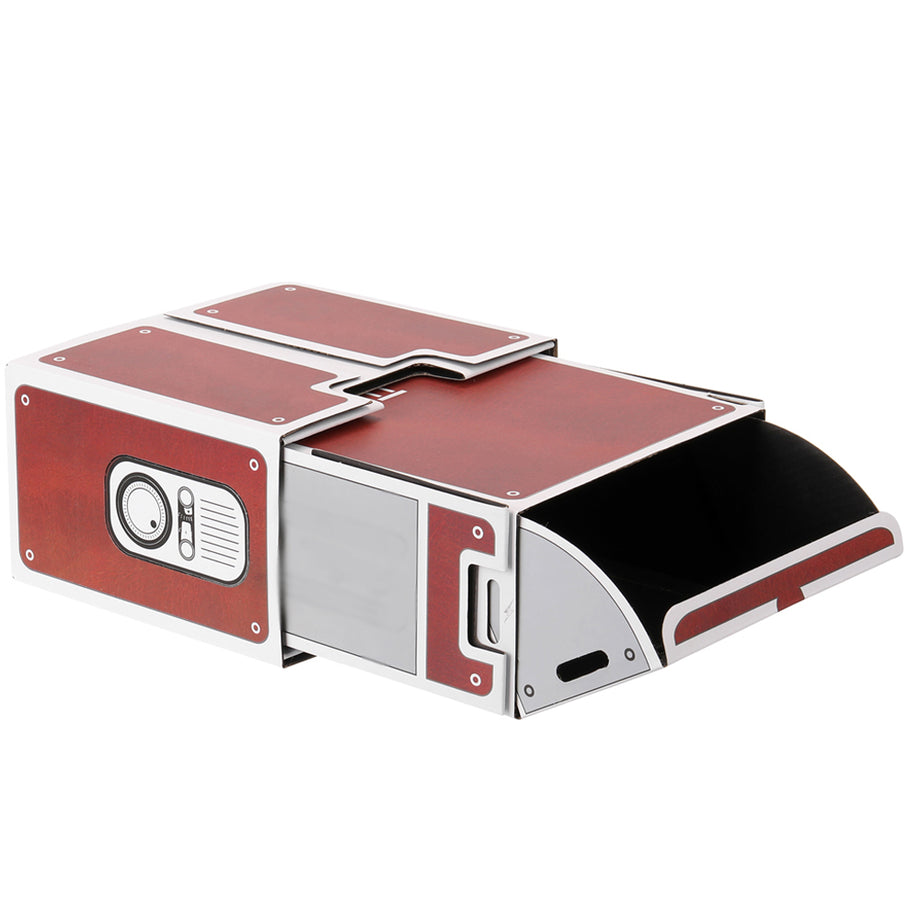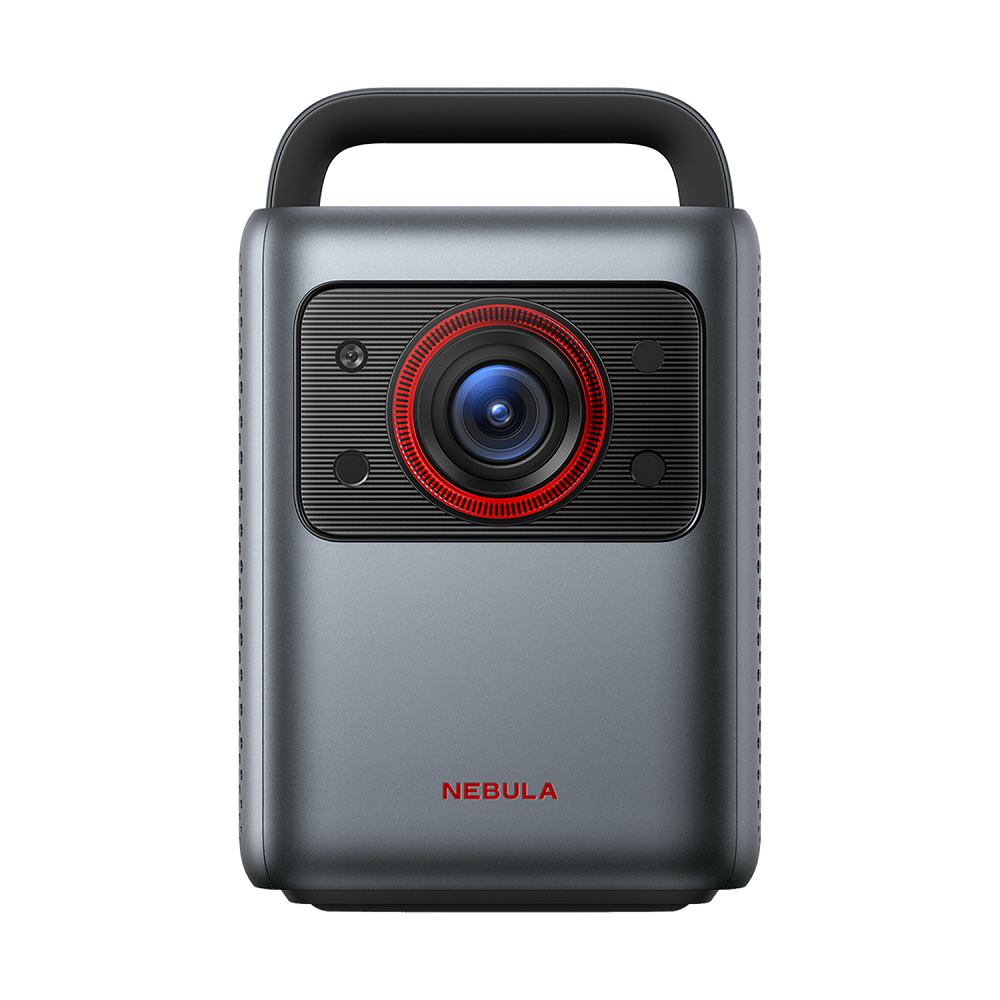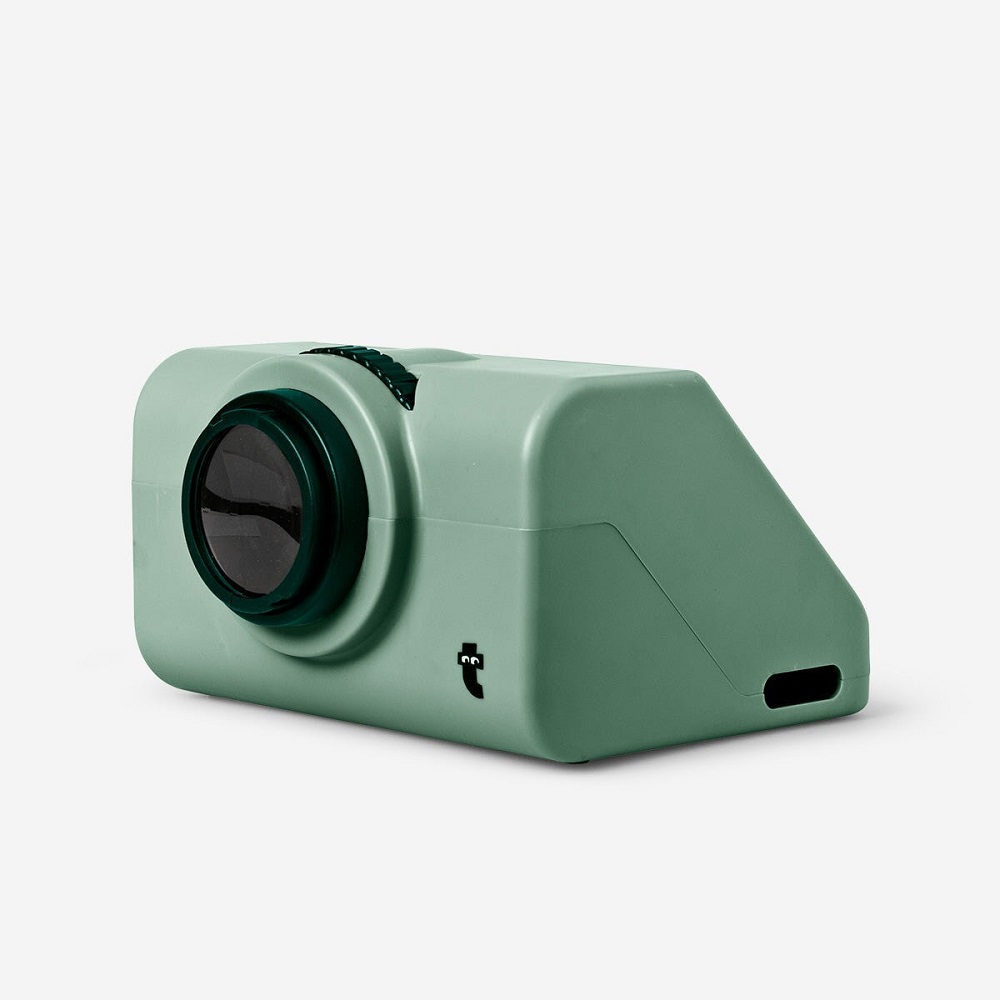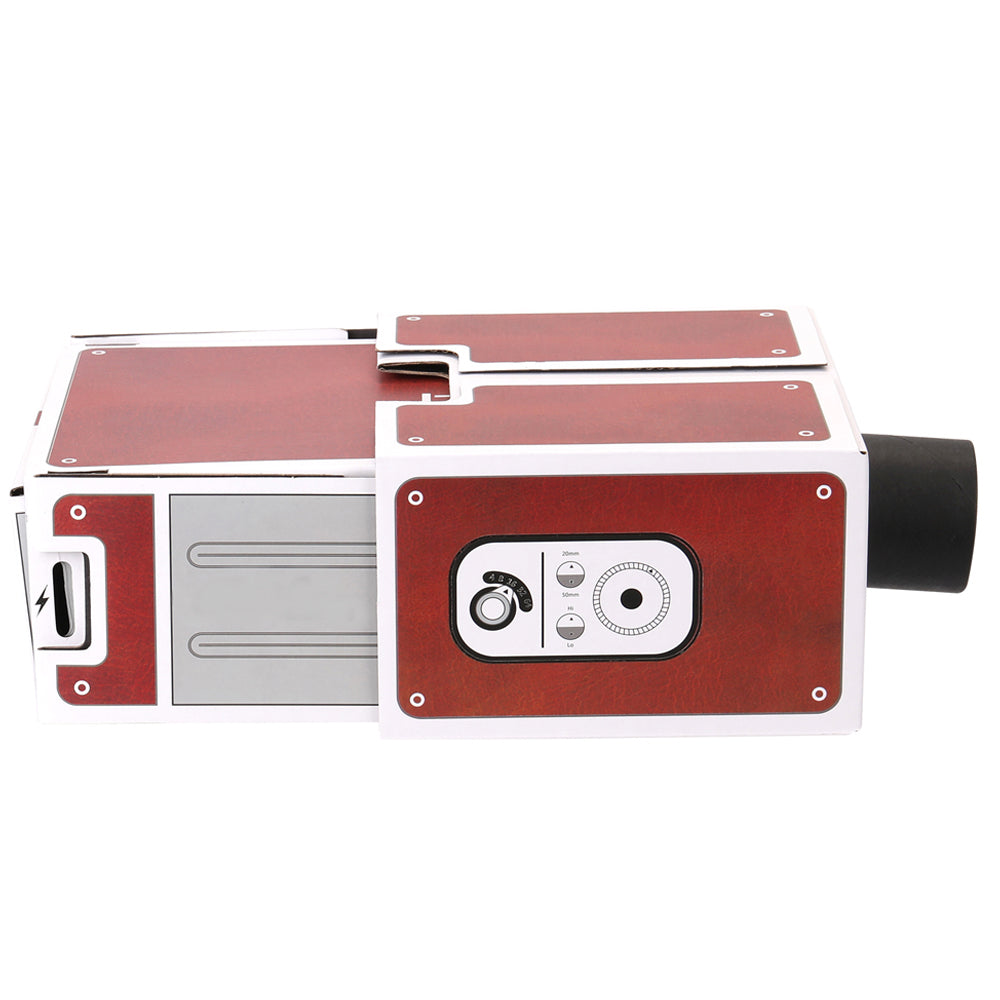Introduction to DIY Smartphone Projectors
Building a DIY smartphone projector is a rewarding and fun project that anyone can enjoy. Using simple materials and tools, you can create a device that magnifies your phone’s display and projects it onto a larger screen. It’s an excellent way to watch videos, share photos, or even give a presentation.
This guide will walk you through the process of making your own projector right at home. The steps are straightforward and require no specialized knowledge. Whether you’re a craft enthusiast, a teacher looking for an educational activity, or just someone interested in a bit of DIY, this project is for you.
DIY smartphone projector work by using a lens to magnify and project the light from your smartphone’s screen. It’s an interesting experiment with physics and light that has roots in the basic principles of optics.
We will start by gathering all the necessary materials and tools. From there, we’ll move on to preparing the shoebox, constructing a phone stand, assembling the projector, and finally, calibrating it for use. Along the way, we’ll address common issues you might encounter and share tips to enhance your viewing experience.
Get ready to dive into the world of DIY gadgets, and let’s start creating your very own smartphone projector.

Essential Materials and Tools
Before you can embark on creating your DIY smartphone projector, ensuring you have all the necessary materials and tools is crucial. Gathering everything ahead of time will make the assembly process smoother and more enjoyable. Let’s look at what you’ll need.
Materials Needed for Your Project
Here are the materials you will require to bring your smartphone projector to life:
- A shoebox: The foundation of your projector, providing the body for the assembly.
- A magnifying lens: This will be the key to enlarging your smartphone’s display.
- Foam board: Used for constructing the phone stand within the projector.
- Gluesticks and PVA glue: Essential for securing parts together.
Make sure each material is ready and in good condition to ensure a stable and reliable projector.
Tools Required for Assembly
Equipping yourself with the right tools will aid in precision and efficiency. Here are the tools you need:
- A hobby knife (XACTO): For cutting the foam board and shoebox with accuracy.
- A hot glue gun: Provides a strong bond for the components of your projector.
- A cutter knife: Useful for trimming and shaping materials.
- A hacksaw: Necessary to remove the handle from the magnifying glass.
- A ruler: Helps measure and align components accurately.
Make sure to handle all tools with care, following safety guidelines to avoid any accidents. After gathering your materials and tools, you’re all set to start building your DIY smartphone projector.
Preparing the Shoebox
Before you can transform your shoebox into a smartphone projector, some preparation is needed. This phase sets the foundation for your projector’s structure and ensures stability during use. Let’s dive into the steps involved in readying the shoebox.
Removing the Handle from Magnifying Lens
Begin by removing the handle from your magnifying lens, as it will only be the lens that we need. Handle removal can be done quickly using a hacksaw. Carefully saw through the handle close to the lens to avoid damage. Ensure you have a firm grip and saw steadily to prevent slipping and potential injury.
Strengthening the Shoebox Structure
Strength is key to keep the shoebox from collapsing or wiggling during use. Use your PVA glue to reinforce the corners and edges of the shoebox. Apply the glue generously along the seams and hold them firmly until they feel stable. You can also place some weighted objects inside the box momentarily to help the glue set with the folds securely held in place.
Cutting and Placing the Lens
Now, it’s time to make room for the lens which is pivotal in projecting the image. Position the lens on the top side of the shoebox and use a pencil to trace its circumference. Then, take an XACTO knife to cut out the traced circle. Be sure your cuts are clean and follow the lines closely to secure the lens snugly. After cutting, place the lens in the hole to ensure it fits perfectly. If there are gaps, you may use small amounts of hot glue around the edge to seal them.
By completing these steps, your shoebox will be well-prepared to house the other components of your DIY smartphone projector. Next, we’ll move on to constructing the phone stand that will hold your smartphone in the optimal position for projecting.

Constructing the Phone Stand
A stable phone stand is essential for a clear and steady projection. Here’s how to create one with ease.
Designing a Stable Phone Holder
Use foam board to design a holder that keeps your smartphone upright. Measure the width and height of your phone to create a customized stand. Cut the foam board with your hobby knife based on these dimensions. Ensure the stand has a base wide enough for support and is tall enough to align with the lens.
Securing the Smartphone on the Stand
After designing the stand, fix your smartphone to it. Use double-sided tape or padding tape for a firm grip. Stick the tape onto the back of your phone and press it firmly against the stand. Check that the phone is secure and won’t slip during projection. This method guarantees that your smartphone projector will display a clear and stable image.
Projector Assembly
Assembling your DIY smartphone projector is an exciting step where you will see your creation taking shape.
Attaching the Lens to the Shoebox
Once your shoebox has dried and is sturdy, it’s time to attach the lens. Center the lens over the hole you’ve cut. Use a hot glue gun to apply glue along the edge of the lens. Be quick and accurate. Press the lens into the hole, making sure it’s flat and secure. Let it dry for a few minutes.
Finalizing the Projector Build
With the lens in place, the main structure of your projector is complete. Now, ensure all edges inside the box are blackened with a marker or paint. This reduces light reflection inside the projector. Next, check that the phone stand is properly glued to the bottom of the shoebox. If needed, reinforce it with more glue or tape. Finally, close the shoebox lid and make sure it sits snugly. Trim any excess material that may block the lens.
Your DIY smartphone projector is now assembled. Get ready to calibrate it for the perfect viewing experience.
Calibration and Usage
Calibrating your DIY smartphone projector ensures the best image quality for your viewing pleasure. Here’s how to adjust your projector for optimal clarity and share some tips to get the most out of your projection experience.
Adjusting Your Projector for Optimal Clarity
To start, place your smartphone at the far end of the shoebox. Slowly move it towards the lens until the image sharpens. Keep adjusting the distance until you find the spot where the projection is clearest. This may require a bit of patience, but the results will be worth it.
Now, focus on the lens. It should be perfectly aligned with your smartphone’s screen. Minor adjustments can greatly affect the clarity, so make small tweaks as needed. A pro tip: ensure your room is dark, as this greatly enhances clarity.
Tips for Better Projection Quality
Achieving high projection quality is key. Start by ensuring your smartphone’s screen brightness is at maximum. More light from the phone means a brighter and clearer image. Also, lock your screen orientation to prevent unwanted rotations during viewing. If your image appears upside down, don’t worry. Many smartphones have settings to flip the screen or you can download an app to correct it.
Lastly, always use your projector on a flat and stable surface. Any movement can blur the image and disrupt your viewing experience. Taking these steps will significantly improve the quality of your DIY smartphone projector output.

Troubleshooting Common Issues
When creating a DIY smartphone projector, you may encounter some issues. It’s important to troubleshoot these effectively to achieve the best results. Here are a few common problems you might face, along with solutions.
Managing Light Leaks
One common issue with DIY smartphone projectors is light leaking. This can cause the projected image to appear dim. Here’s how to manage light leaks:
- Seal all gaps: Use black tape to cover cracks and gaps where light might escape.
- Paint the inside black: Use black paint inside the box to absorb light instead of reflecting it.
- Check the lens fit: Ensure the lens fits tightly in its place. Adjust if necessary.
These steps help better control the light inside the box, improving the projector’s effectiveness.
Dealing with Image Distortion
Image distortion can occur if the smartphone or lens is not properly aligned. Here’s how to fix this:
- Adjust the phone stand: Make sure the phone is parallel to the lens. Realign if needed.
- Modify the lens placement: Sometimes, adjusting the lens slightly can reduce distortion.
- Ensure flat surface: Always set up your projector on a flat, stable surface.
Properly managing these elements can significantly reduce distortion, improving your viewing experience.
Enhancing Your Viewing Experience
To make your DIY smartphone projector more effective, enhance your viewing experience with a few simple adjustments.
Maximizing Phone Brightness and Locking Screen Orientation
Brighten your phone to the highest setting before using the projector. A brighter screen means a clearer image on the wall. Go to your phone’s settings and turn the brightness all the way up. If your phone has an auto-brightness feature, turn it off, as it can dim the screen in a dark room, which is not ideal when projecting.
Also, lock your screen’s orientation. This stops it from rotating while you watch. Go to the settings on your phone and disable auto-rotate. This ensures your projected image stays put, no matter how you move the phone.
Using Apps to Flip the Projected Image
Sometimes, your image might flip upside down when projected. Most phones have settings that let you flip the screen. If yours doesn’t, don’t worry. You can download apps that do this for you. Search the app store for ‘screen flip’ or ‘image rotation’. Install the app and follow its instructions to flip your phone’s display. Now, your projected image will appear right-side-up.
With these tips, the image quality of your DIY smartphone projector should improve. Try them out to get the most out of your projector.
